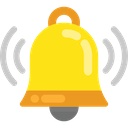Hi George,
One procedure is to wash the inside of the parts with clean brake fluid, which also provides some lubrication, so there are no concerns about compatibility. However that's nasty stuff and if the job is done in advance and the car or just the parts sit unused for a while, traces of brake fluid quickly cause surface corrosion (not to mention the damage it does on exterior parts/paint).
So, instead of brake fluid, I coat everthing very thinly with Raybestos Brake Lubrication oil.
For cleaning, I use spray cans of disc brake cleaner a lot. It dries very quickly and leaves no residue. It's a superb de-greaser and will even remove old paint. Work outdoors with it, if at all possible, and wear gloves.
I do think it's a good idea to first do as already has been suggested, neutralize that acid. Just be sure there is no grit of any kind left behind inside the caliper.
There are some tricks to getting the rubber boot to pop into place, but let's take a step backward, first.... The pistons in particular need to be in good shape. They were originally chromed steel and the plating is prone to flaking. Any flaking can be a problem and send bits into the brake system where it's hazardous. Especially if any flaking has happened on the sides of the piston, where it rubs against and can damage the rubber seal in the caliper, the piston must be replaced. There are upgrade stainless steel pistons available that might be a very good idea for low mileage cars. (Daily driving is actually good for things like brake systems, lubrication, mild steel exhaust, etc. Cars that sit for longer periods might see problems.)
Installing the piston and it's seals can be a bit tricky, sort of like the proverbial greased pig. Here's what works for me (eventually):
First install the inner seal in the caliper, with a bit of brake lubricating oil on the surface the piston needs to slide past. Then install the outer rubber boot/secondary seal, into the caliper groove. Be sure it seats all the way into its groove and put some of that brake oil on the lip. Gently stretch the rubber lip a little with your fingers.
Next hold the piston squarely against the rubber boot. At this point, use gentle, low pressure air blown into the bleeder of the caliper to "pop" the rubber boot around the piston. I also use a dull edged tool I made from brazing rod, that's sometimes needed to start the piston into the boot. Continue to be very careful not to damage, dislodge or tear the outer boot at the same time the piston is being pressed into place, keeping it square so that it doesn't dislodge either the outer or inner rubber seals.
To accomplish this, three or four hands would be useful at times!
Also, you need to seal up the opposite piston in the caliper temporarily. If there are no piston/seals installed yet, I use a small piece of sheet rubber bought at a local hardware store, along with a flat piece of metal (actually a wide paint scraper) and a c-clamp.
If the opposite piston and seals have already been installed, I use the same flat piece of metal and c-clamp to keep it in place and prevent it from popping out while I install the other side. Be careful not to overtighten the c-clamp. Sometimes it helps to use a piece of wood shim to protect the piston and caliper surfaces.
Once the piston is smoothly and squarely started into the bore and the outer boot seal is snugly stretched around it, some hand or thumb pressure should be all that's necessary to push the piston the rest of the way in. As it nears the bottom, the lip on the rubber dust boot should be engaged in the slot on the rim of the piston.
Now that it's fully installed, you should be able to move the piston in and out pretty easily. There is no good way to get a grip on it to pull it out, so a little compressed air might be needed to push it out slightly (very gently, you don't want to pop it all the way out or blow the dust boot out of the grooves), and hand pressure can push it back into the caliper. If it's not easily moved, probably the inner/primary rubber seal is out of its groove and is interfering with the piston movement and/or the rubber dust boot lip/outer secondary seal is dislodged from the groove in the caliper.
Brakes are a safety critical item and *must* be done right and work every time. Not knowing your skill and experience, all I can say is be very careful and certain they are working 100% when you are done with this project.

 Hi Guest!
Hi Guest!

 smilie in place of the real @
smilie in place of the real @
 Pretty Please - add it to our Events forum(s) and add to the calendar! >>
Pretty Please - add it to our Events forum(s) and add to the calendar! >> 
